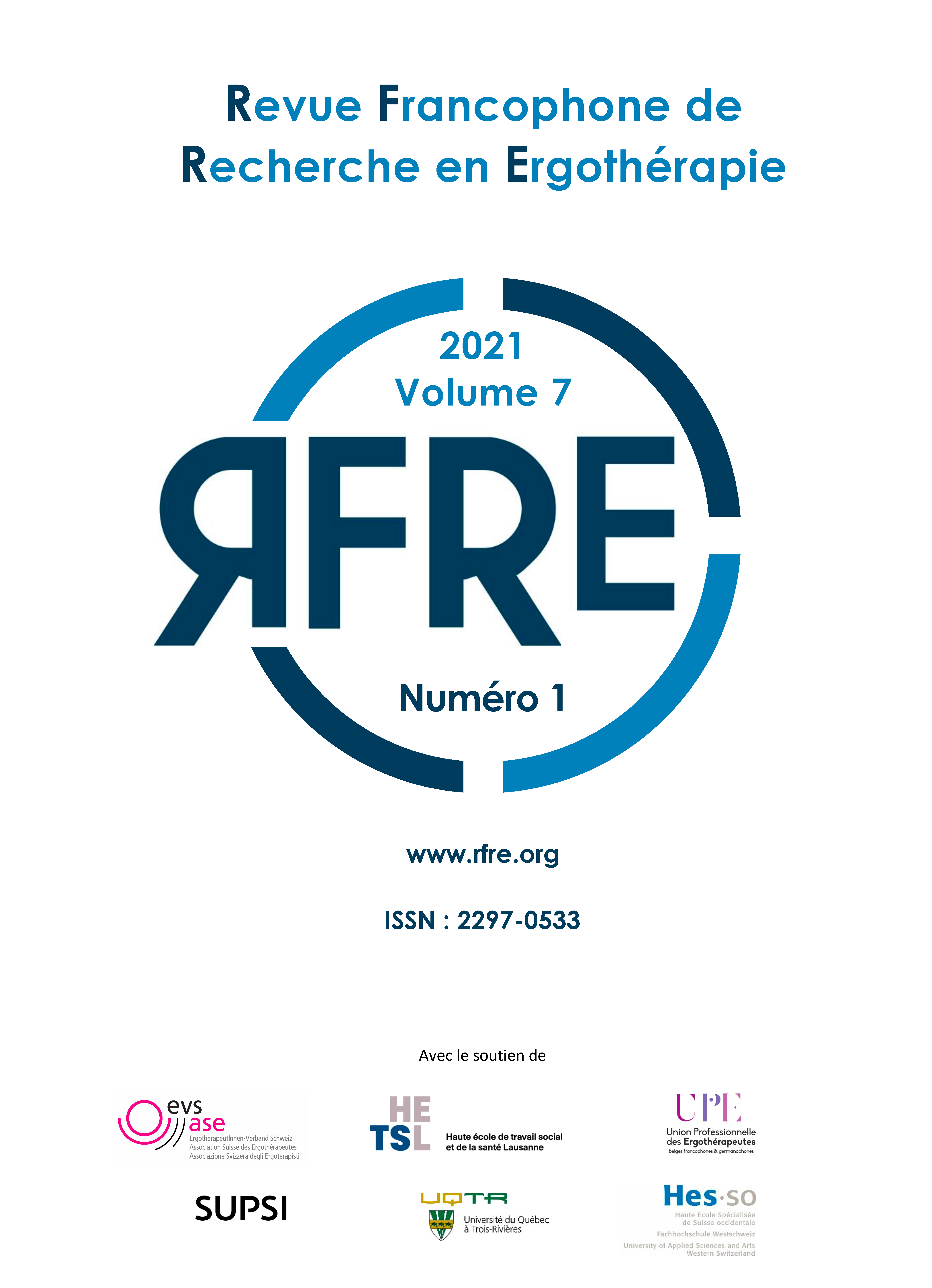Occupational therapy and virtual reality for the return home
DOI:
https://doi.org/10.13096/rfre.v7n1.179Keywords:
Virtual reality, Home visit, Discharge/return home, Occupational therapy, CAVEAbstract
Virtual reality seems to offer new perspectives in health, particularly regarding home discharge after intensive rehabilitation. Virtual systems such as CAVE would make it possible to virtually reproduce a person's home and explore potential solutions for home adaptation before discharge.
The primary outcome of this study is to evaluate occupational therapists’ interest for the use of CAVE in decision making regarding patients home discharge. The secondary outcome is to identify and prioritize home adaptation priorities that can be integrated into the CAVE to facilitate the process of return to home for people with disabilities.
Data were collected through an online survey using SphinxOnline. Participants were occupational therapists involved in the activities for the return home of people with disabilities with at least one home visit per month.
82% of occupational therapists believed that the use of immersive technology, such as CAVE, would improve home discharge process for people with disabilities. Participants identified 26 products (hollow sink, worktop, medical bed, commode chair, grab bars, bath and floor drain shower, etc) that should be included as a priority in the digital library for the CAVE.
Immersive systems such as CAVE seem to be promising tools to prepare patients undergoing rehabilitation for home discharge. Nevertheless, further studies are needed to establish appropriate list of products to be integrated into the digital library and to evaluate the feasibility of using CAVE in the context of home discharge.
Downloads
Published
How to Cite
Issue
Section
License
Copyright (c) 2021 Julian Burat, Stéphane Mandigout, Thierry Sombardier, Anaick Perrochon, Dr

This work is licensed under a Creative Commons Attribution-NonCommercial-ShareAlike 4.0 International License.












